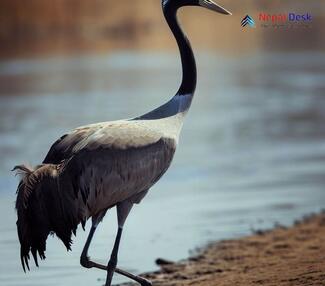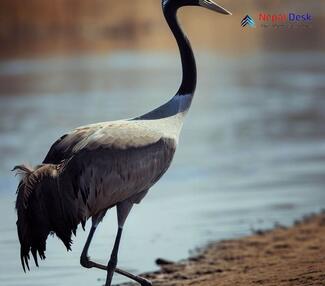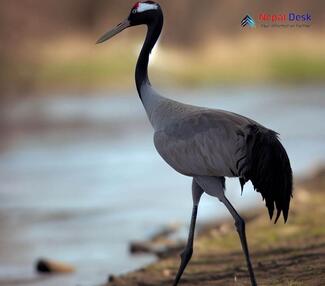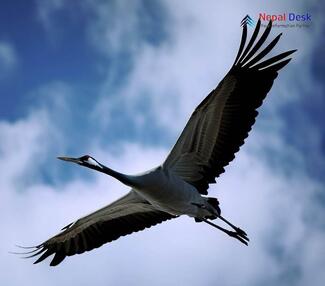Nepal, a small yet diverse country nestled in the heart of the Himalayas, has long been known for its captivating beauty and rich cultural heritage. But what many may not know is that this remarkable land is also home to a stunning array of wildlife, including the majestic Common Crane (Grus grus). The Common Crane is also known as Eurasian Crane and is a bird of the family Gruidae, the cranes. It was first formally described by the Swedish naturalist Carl Linnaeus in 1758. In this article, we'll explore the fascinating world of these elegant birds and their unique presence in Nepal under various topics:
Journey into the Wetlands
To catch a glimpse of the common crane in Nepal, one must venture into the wetland habitats that provide an ideal sanctuary for these magnificent creatures. The bird's natural habitat consists of marshes, shallow lakes, and flooded meadows - perfect locations for nesting and breeding. Due to the rise of conservation efforts in recent years, several areas in Nepal have become havens for these birds to thrive.
A Sight to Behold: The Common Crane's Spectacular Display
One of the most enchanting aspects of common cranes is their elaborate courtship display. Accompanied by a distinct vocalization – described as a trumpeting or bugling sound – their dance involves bowing, stretching their wings out wide, leaping into the air, and even tossing vegetation with their beaks. This expressive and captivating ritual serves as a powerful bonding experience between mates and amplifies their connection before nesting season begins.
A Stopover Destination for Migratory Birds
Nepal's strategic location along the Central Asian Flyway makes it an essential stopover point for an array of migratory bird species – including common cranes. These magnificent birds migrate thousands of kilometers between their breeding grounds in Eurasia and wintering sites in India. During their migration, they often pause at key aquatic habitats throughout Nepal to rest, refuel, and socialize with fellow cranes before continuing on their incredible journey.
Conservation Efforts and Ecotourism
Recognizing the significance of the biodiversity that inhabits its wetlands, Nepal has taken definitive steps towards the conservation. The government, in collaboration with local communities and international organizations, has established various protected areas and Ramsar sites to ensure the country's delicate ecosystems are preserved. This commitment to conservation has led to the rise of ecotourism, providing birdwatchers and wildlife enthusiasts with the opportunity to observe these elegant birds up close in their natural surroundings.
Embarking on a journey to explore the mesmerizing world of common cranes in Nepal is an unforgettable experience that brings you closer to the heart of this biodiversity hotspot. With increased awareness and ongoing conservation efforts, we can hope for a sustainable future that safeguards both common cranes and countless other species that find refuge in this beautiful land.




